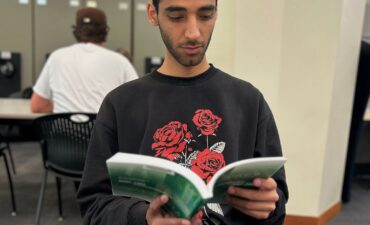
Homeschooled students tend to do better than their public school counterparts when it comes to standardized test taking. According to one study published in the Canadian Journal of Behavioral Science compared with public school children, homeschooled children tended to be ahead, with a half-grade advantage in math, and are almost 2-grade levels higher when it came to reading. The conclusion of this study was that a firmly structured homeschooled student may have academic advantages when compared to their public schooled peers. For those who do know about homeschooling, this comes as no surprise. It has been a common opinion held that homeschoolers, in general, tend to do better when it comes to academics in school.
If you were to ask the average person what they think about homeschooling, they might give you a rather bewildered look and say, “I didn’t really know that was a thing” or “Not much really”. Homeschooling has been formally recognized since the 1970s. It has been around for quite a long time in Canada and can take any number of guises, from families looking for flexibility and time with their children to parents wanting to keep their children safe from bullying, or providing a safe place for an autistic child to learn. Some homeschoolers even band together with other homeschoolers to form what are known as homeschool co-op’s, which, depending on the group, does activities together such as sports, or field trips for their students.
In 2017 there were around 2,500 children who were being homeschooled in Saskatchewan, each reporting to a different school division. According to provincial auditor, Judy Ferguson, the school divisions needed to have better checks and balances in place to ensure standards were being met. In their study of one such school division ( the Prairie Valley School Division), Ferguson and her team found that the school division was having trouble keeping track of what are called education plans. Basically, an education plan is what a parent would present to the school division, showing what the year will look like for their student(s). Then at the end of the year, the parent will send in a second document showing generally how the plan was followed, which includes some proof, either through actually showing something the student worked on or wrote (for example an essay).
So how does homeschooling actually work? What does it look like?
Gerlie Brost is an example of a homeschooling parent in Regina. Gerlie started homeschooling when her first daughter was three years old and has continued to do so since. Her daughter is currently in grade 2. Gerlie teaches her homeschool in a very specific way, “Here in my homeschool, I do it as a school. I stand up there and teach my kids, and sometimes they bring other kids here, and I kind of have a group of little kids. and then I teach them like I’m in front of a blackboard and teach them just like [the way] we did [it] in school.”
Gerlie moved to Canada back in 2005 from the Philippines, but she learned about homeschooling while in Canada (even though homeschooling is an option for education in the Philippines). She first heard about homeschooling from her Canadian husband Jamie, who himself had been homeschooled when he was young.
Jamie, is a good example of a successful homeschooled student. Raised on a farm, Jamie’s mother taught him right up until high school. Jamie remembers that time fondly and it has given him a strong character and work ethic. “I enjoyed school for the most part. In fact, my Mom was able to bring me two grades ahead, so I was able to graduate two years early. The best part about it to me was we didn’t have to spend all day doing school. For the most part, my schooling was done in the morning, and the rest of the afternoon I could go out and play because I had all of my work done and my grade point average was always very high so there were no problems. That changed a little bit when I was in high school because there is a lot of reading to do, but for the most part, I still enjoyed the fact that I could get my school work done and then go have fun.”
I myself was homeschooled from kindergarten to grade 12, and I am, as someone once put it, a graduate of the kitchen table. For my family, there was a fairly structured schedule that we followed. We would get up at around 8:00 a.m. in the morning, and would get ready for the day. After breakfast we would start with an hour or so of math, followed by an hour of social studies. We would then break for lunch. After lunch we would devote the rest of the afternoon (anywhere from 1:00 to 2:00 p.m.) to reading. This was pretty much what I experienced growing up as a homeschooled kid. Things changed a little bit when I took grades 10, 11, and 12, where I moved from working with my Mom’s home created plan, to an online class environment which was created by Parkland College (Parkland College is actually a group of colleges in southeastern Saskatchewan that provide both post-secondary education as well as access to an adult grade 12 learning program). As I recall, my early education was quite similar to what Gerlie currently does for her children.
However, homeschooling is not perfect, and there are a number of downsides and criticisms of it (though many homeschoolers will defend their position). One professor at Teachers College of Columbia University, Amy Stuart Wells, says that homeschoolers are not learning to become a part of a diverse society, “I don’t want my son to think just like me,” Wells says, ““I want him to be challenged and confronted with other points of view. We have to question homeschooling from that standpoint.”Another fairly common criticism of Homeschooling is that students who are homeschooled, tend to not be as well adjusted to life socially as students who were schooled conventionally through public school. According to one article written in the Peabody Journal of Education in 2013, “there is essentially no scientific evidence on the effectiveness of homeschooling. This is not to say that the practice is not effective, particularly in every case, but only that multiple research attempts have not yet proven its effectiveness.” Another criticism of Homeschooling is that it can be used as a justification for parents to pull their children out of a regular school (for any number of reasons, such as not trusting the education system), and then not provide them with any education at all.
But students who are homeschooled do tend to perform better academically when compared to public schooled students. According to the Business Insider, about 67 per cent of students who are homeschooled and go to college, graduate, as compared to 59 per cent among public schooled students who go to college and graduate.
According to information from the Fraser Institute, homeschooling as an option for education has seen an increase in Canada. In 2014 and 2015 the total number of homeschooled students went from 19,504 seven years prior to 26,646. All that can be said is that for the moment, homeschooling is growing both locally in Saskatchewan, and nationally in Canada.














